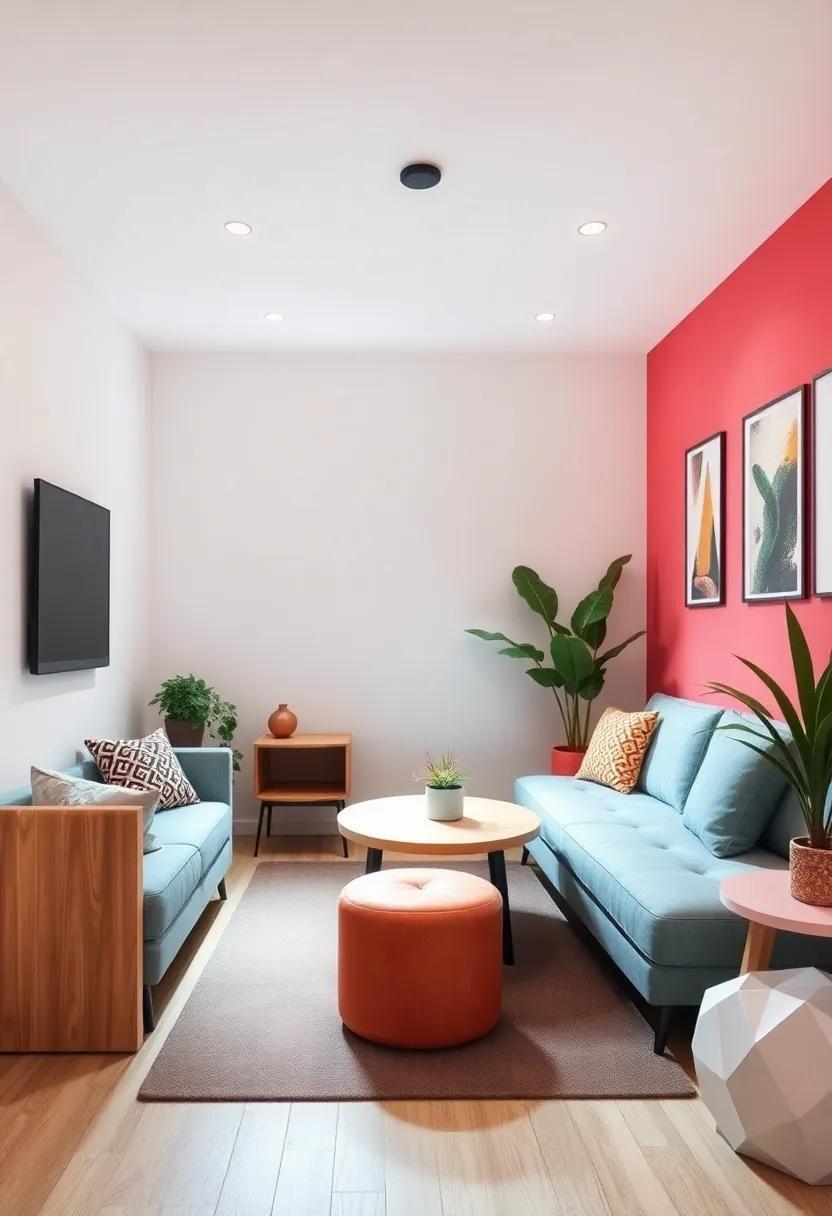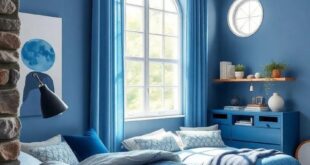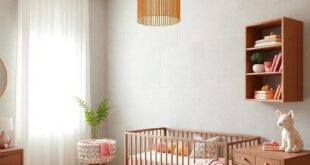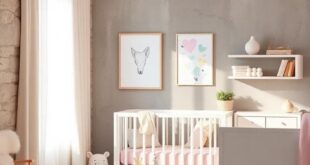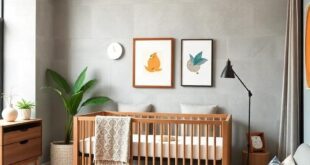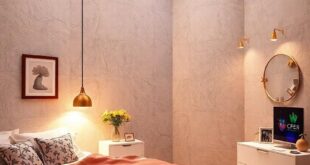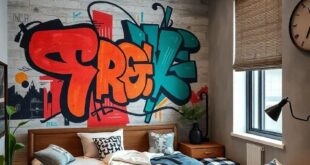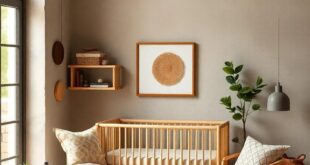In an age where digital interaction often takes precedence, the importance of physical spaces for genuine connection has never been more vital—especially for teenagers.As they navigate the tumultuous waters of adolescence, having a dedicated hangout room can serve as both a refuge and a creative haven. Imagine a space designed to foster friendships, spark creativity, and encourage shared experiences away from the screens that dominate their daily lives. In this article, we delve into the essentials of creating the perfect teen hangout room, offering innovative ideas and practical tips that blend comfort, style, and functionality. From cozy nooks for quiet reflection to vibrant activity zones that inspire collaboration, join us on a journey to transform a mundane corner of your home into a distinctive atmosphere where connection and creativity flourish.
Cozy Corner Nooks: Crafting Inviting Spaces for Relaxation and Conversation

Creating a space that feels both inviting and intimate can transform your teen hangout room into a perfect retreat for relaxation and conversation. Consider implementing a range of cozy seating options that encourage lounging and connection. Bean bags, floor cushions, or a small loveseat can create a welcoming habitat. Add personal touches with a collection of soft throws and decorative pillows to enhance comfort. Integrate a small coffee table or side tables for snacks, drinks, and games, allowing everyone to feel at home. To foster an atmosphere conducive to conversation, incorporate soft lighting with fairy lights, string lights, or a sleek table lamp that sets the mood.
Another element to consider is the arrangement of the space. An effective layout not only promotes comfort but also encourages interaction among friends. L-shaped seating or a circular arrangement can facilitate easy conversation flows.Pair these seating arrangements with a designated spot for activities, such as a games corner, where you can house board games or a crafting station for creative projects. To elevate the cozy ambiance, consider adding elements such as indoor plants, which can purify the air and add a vibrant touch. Here’s a simple table to visualize some key features to include in your cozy corner nook:
| Feature | Purpose |
|---|---|
| Seating Options | Encourages lounging and conversation |
| Soft Lighting | creates an inviting atmosphere |
| Game/Crafting Zone | Fosters creativity and collaboration |
| Decorative Elements | Personalizes the space and enhances comfort |
Multifunctional furniture: Blending Style and utility in Small Spaces
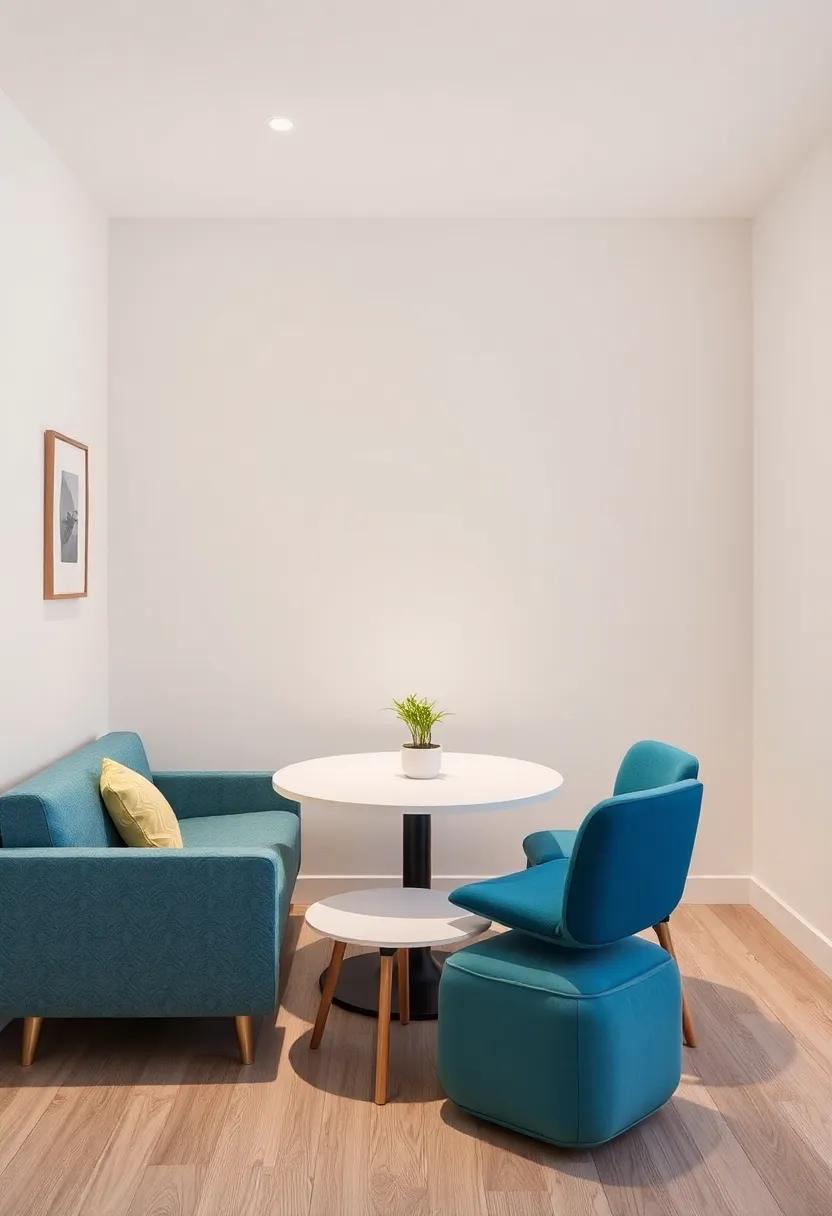
In a teen hangout room, multifunctional furniture transforms limited space into a realm of connection and creativity. Consider a sofa bed that seamlessly shifts from a cozy lounging area during the day to a cozy bed for sleepovers at night. Another versatile option is an ottoman that doubles as storage, ideal for stashing away games, blankets, or books while still serving as extra seating.Wall-mounted desks can be folded down when needed, providing a perfect workspace for homework or art projects, and stowed away to create more room for activities when not in use.
To enhance the room’s aesthetic, incorporate pieces that reflect personal style while ensuring practicality. Look for stackable chairs that can be stored away easily or colorful bean bags that are both fun and flexible for seating. An expandable coffee table can serve as a central gathering point for snacks, board games, or craft projects, while also adapting to the flow of the room as needed. Check out this fast reference table for an overview of essential multifunctional furniture:
| Furniture Piece | Functionality | Style Tip |
|---|---|---|
| Sofa Bed | Seating + Sleep Space | Choose bold colors or patterns |
| Ottoman | Storage + Seating | Opt for textured fabrics |
| Wall-mounted Desk | Workspace + Free Space | Integrate with wall art |
| Stackable Chairs | Seating + Storage | Mix and match colors |
| Expandable Coffee Table | Gathering + Dining | Choose a sleek,modern design |
Vibrant color Palettes: Infusing Energy and Creativity into the Room
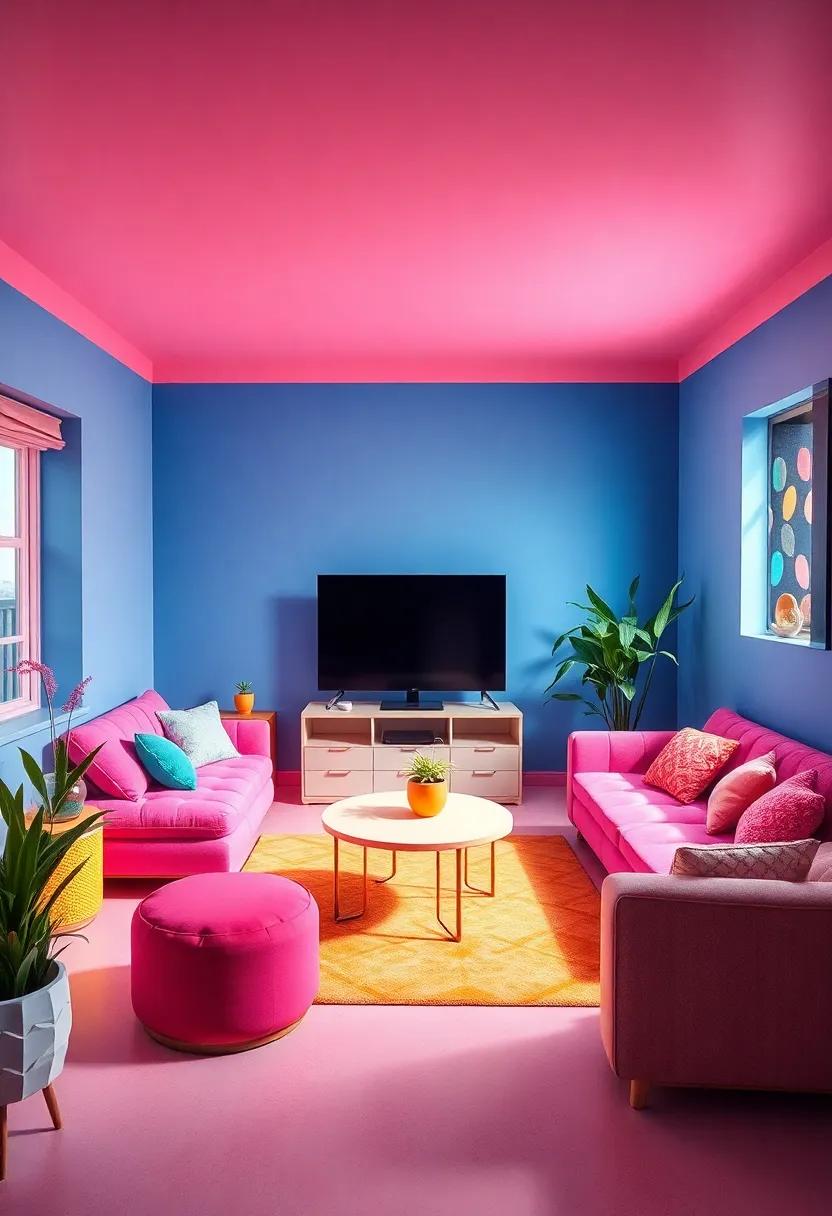
Incorporating a vibrant color palette can transform a mundane space into a lively gathering spot for teens.Bold hues like electric blue, neon green, and fiery orange can serve as energizing accents that stimulate creativity and conversation. Consider painting one wall a striking color to serve as a focal point, while the rest of the room features softer shades to balance the intensity. This interplay between luminous and muted tones helps create an inviting atmosphere that’s conducive to both relaxation and collaboration.
To enhance the dynamic feel of the room, use color in various elements such as décor, furniture, and accessories. Here are some ideas to add splashes of color throughout the space:
- Throw Pillows – Mix various patterns and colors for a playful look.
- Artwork – Choose pieces that feature bold colors or abstract designs to spark inspiration.
- Rugs - Opt for vibrant, graphic prints to define areas within the room.
- Light Fixtures – Install colored LED bulbs that can change hues based on mood or activity.
Artistic Wall Decor: Showcasing Personal Creativity and interests
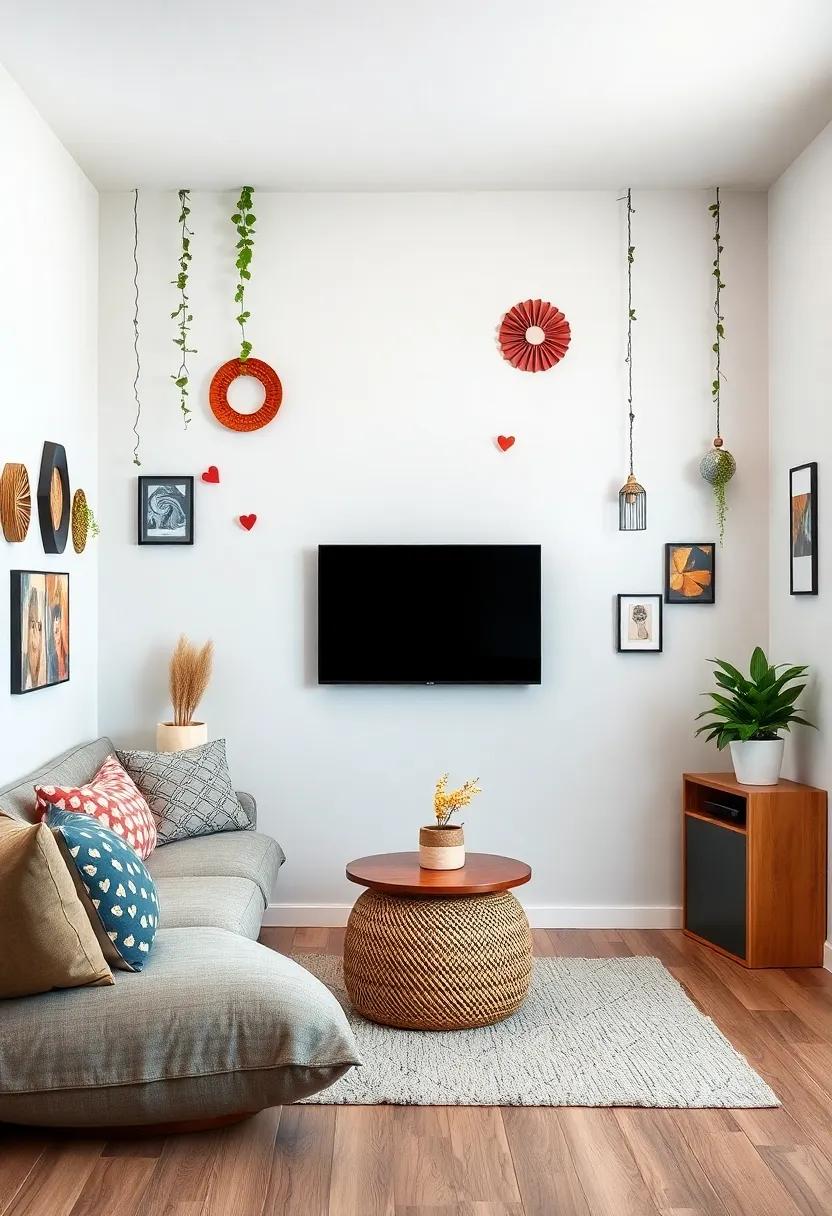
Transform the walls of a teen hangout room into a canvas that reflects the vibrant personality and diverse interests of its occupants. Consider an eclectic mix of artwork, from original paintings and photographs to handmade crafts and posters of favorite bands or movies. Layering these elements not only infuses life into the space but also encourages personal expression. Utilize bulletin boards or hanging frames that allow for easy updates, letting the walls evolve alongside the teen’s tastes. Adding a dedicated wall for inspirational quotes or self-made art can further personalize the area, creating an engaging environment to foster creativity.
Incorporating unique decorative items can enhance the overall atmosphere of the room. Think about including:
- DIY String lights: wrap them around key art pieces to create a cozy, inviting glow.
- 3D Wall Art: Use materials like wood or cardboard to create depth and intrigue.
- Nature-Inspired Decor: Incorporate plants or natural elements to connect with the outdoors.
- functional Art: Explore creative shelves or hooks that double as art pieces.
Additionally, consider designing a small corner or a dedicated space to showcase rotating artwork or personal collections. A simple HTML table could serve to display this concept:
| Artwork Type | Possible Locations | Display Method |
|---|---|---|
| Paintings | Main wall | framed or canvas stretched |
| pinned Photos | Bulliten Board | Push pins or clips |
| Quotes | Accent wall | Vinyl decals or framed prints |
Tech-Friendly Areas: Integrating Gadgets Without Overloading the Space
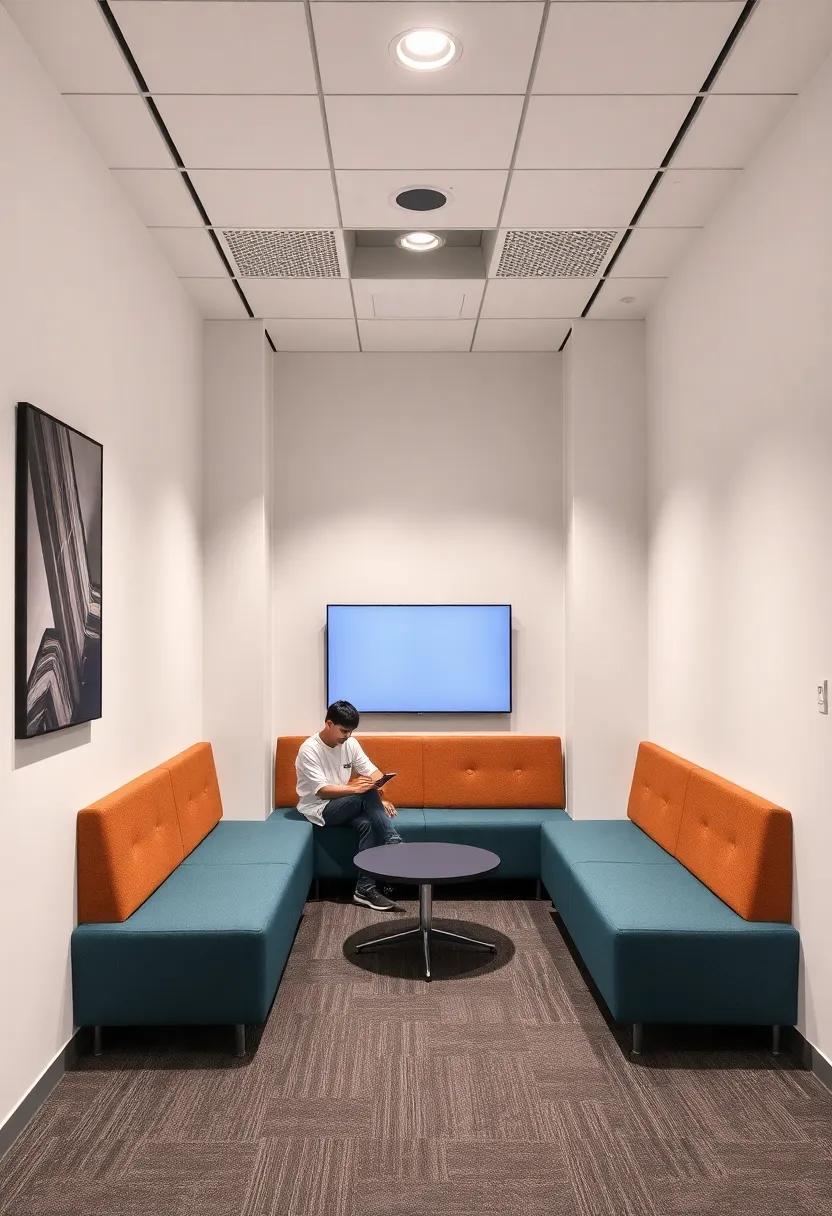
Creating a tech-friendly atmosphere in a teen hangout room invites both creativity and connectivity, but it’s essential to integrate gadgets without overwhelming the space. Start by incorporating multi-functional furniture that includes built-in charging stations and cable management solutions. Consider using:
- Convertible desks that can transform into gaming stations.
- Couches with USB ports for easy device charging.
- Ottomans that double as storage for gaming accessories or tech gadgets.
This approach not only keeps gadgets organized but also encourages collaborative use, making it a hotspot for social interactions.
Next, optimize the room’s layout by designating specific zones for different activities, ensuring devices are accessible yet not cluttered. For a balanced environment, create a tech zone with a large screen and gaming consoles, paired with comfortable seating. Around the room, sprinkle in calming elements such as plants or art displays that soften the tech-heavy ambiance. A simple table can help maintain order, like this:
| Activity | Recommended Equipment |
|---|---|
| Gaming | Console, controllers, VR headset |
| Creative Projects | Laptop, drawing tablet, printer |
| Movie Nights | Projector, sound system, cozy lighting |
By harmoniously blending technology with design, the teen hangout room can thrive as a functional and inviting space for both relaxation and active engagement.
Comfort-Enhancing Textiles: Choosing Cushions and Rugs for Maximum Relaxation
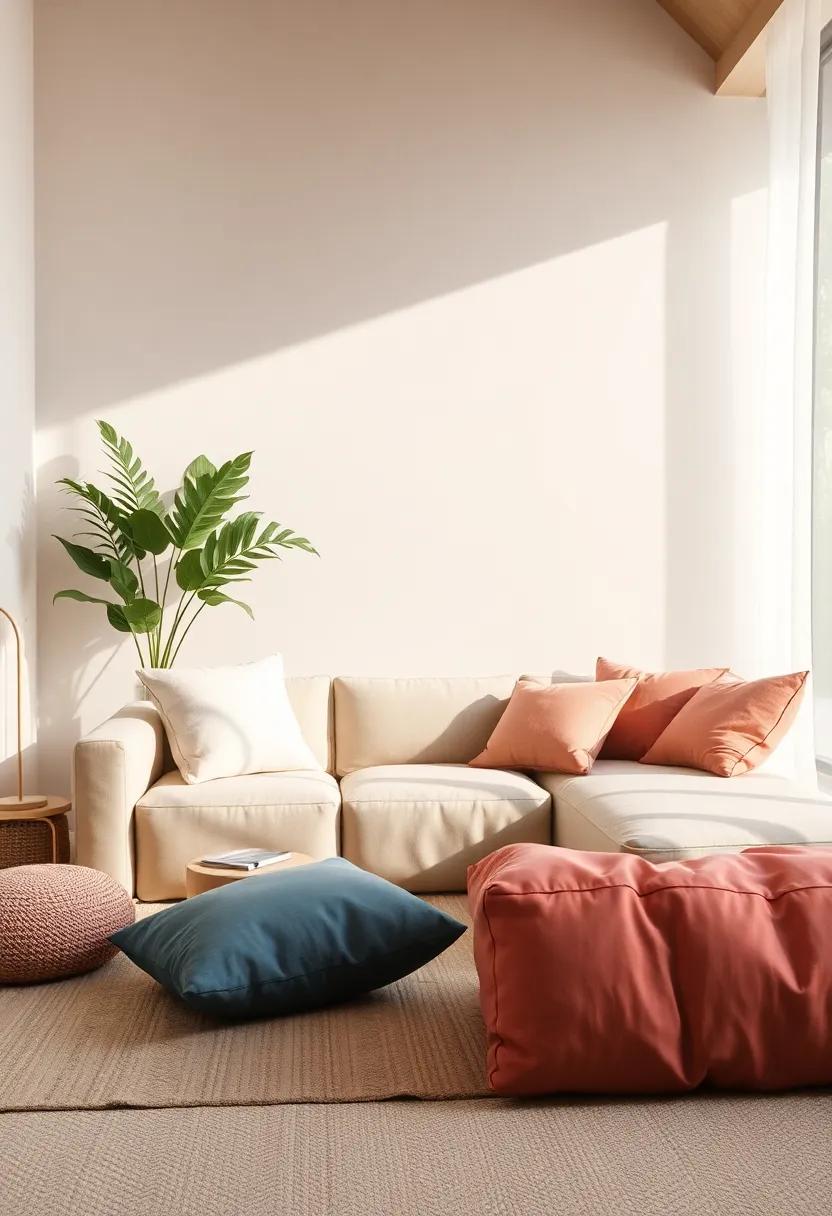
Creating a cozy atmosphere in a teen hangout room is all about selecting the right textiles that invite relaxation and comfort. Cushions play a key role in this, as they can transform a standard seating area into a plush retreat. Consider various shapes and sizes—like oversized floor cushions or sleek throw pillows—that encourage lounging and socializing.Mixing and matching colors and patterns can also add an element of fun, allowing teens to express their personality while they chill with friends or dive into creative projects.
Rugs, on the other hand, not only define an area but also add warmth underfoot. Opt for soft, inviting materials like shag or plush weaves that make it inviting to sit or sprawl on the floor. Area rugs shoudl be large enough to accommodate seating arrangements; they can also serve as a canvas for the room’s style. For added functionality, consider anti-slip options to ensure safety during energetic hangouts. Here are some top choices:
| Textile Type | Ideal Use |
|---|---|
| cushions | Seating comfort and style |
| Floor Pillows | Casual seating options for groups |
| Throws | Extra warmth and layered aesthetics |
| Rugs | Defining hangout zones |
Inspiring Lighting: Setting the Mood with Adjustable Ambience
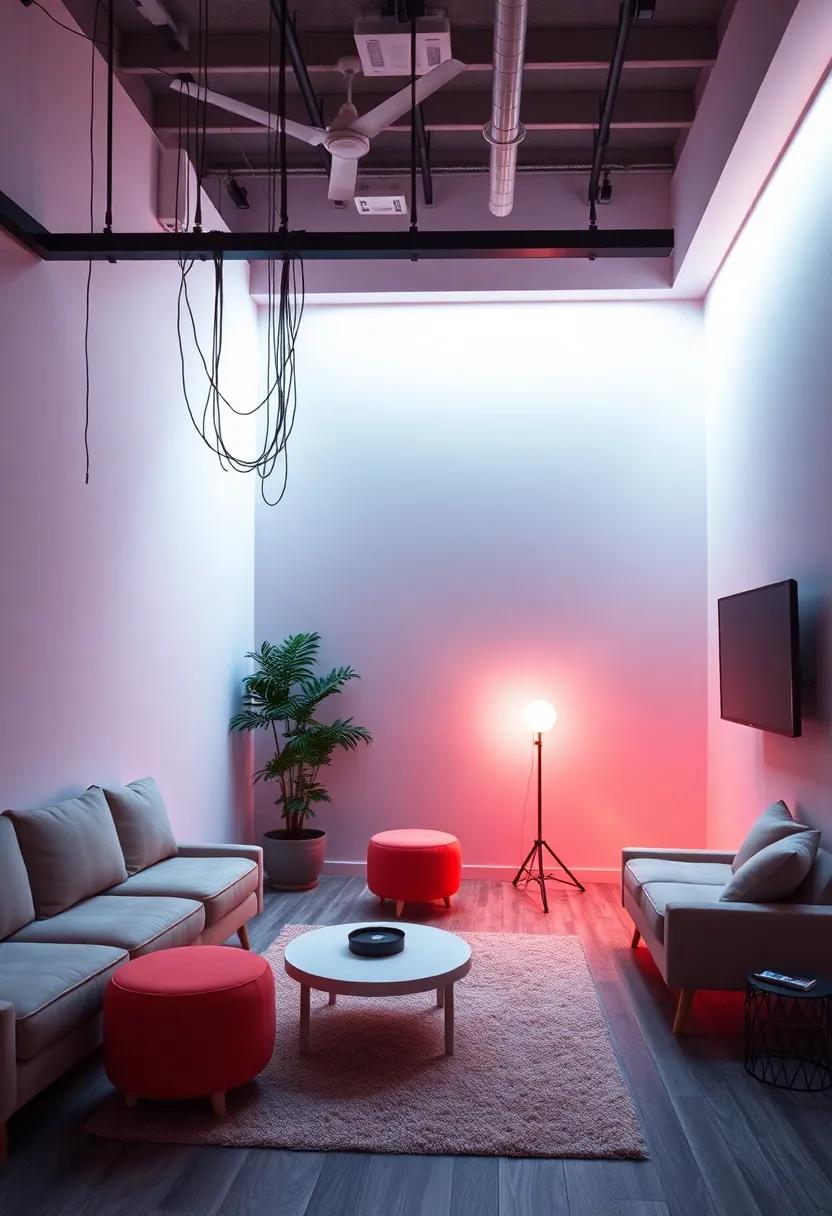
creating an inviting atmosphere in a teen hangout room starts with the right lighting. Use adjustable light sources to tailor the ambiance for different activities, whether it’s a movie night, a game session, or a study group. Consider layering various types of lighting, such as:
- Overhead lights: For general illumination, opt for dimmable ceiling fixtures or fun pendant lights.
- Accent lighting: Add LED strips along shelves or around windows to create visual interest and mood.
- Task lighting: desk lamps or focused lights can enhance creativity during brainstorming or homework sessions.
Another great way to enhance that personalized touch is by incorporating smart lighting solutions that can change color and intensity with ease. This versatility allows teens to set the perfect backdrop for any occasion.A simple color palette can evoke different feelings—blues for relaxation, reds for energy, or soft whites for clarity.Consider the following suggestions for maximizing lighting effects:
| Color | Emotion |
|---|---|
| Soft Blue | Calm & Focused |
| Warm Yellow | Joyful & Inviting |
| Vibrant Pink | Energetic & Fun |
| soft Green | Refreshing & Creative |
Themed Zones: Creating Distinct Areas for Various Activities
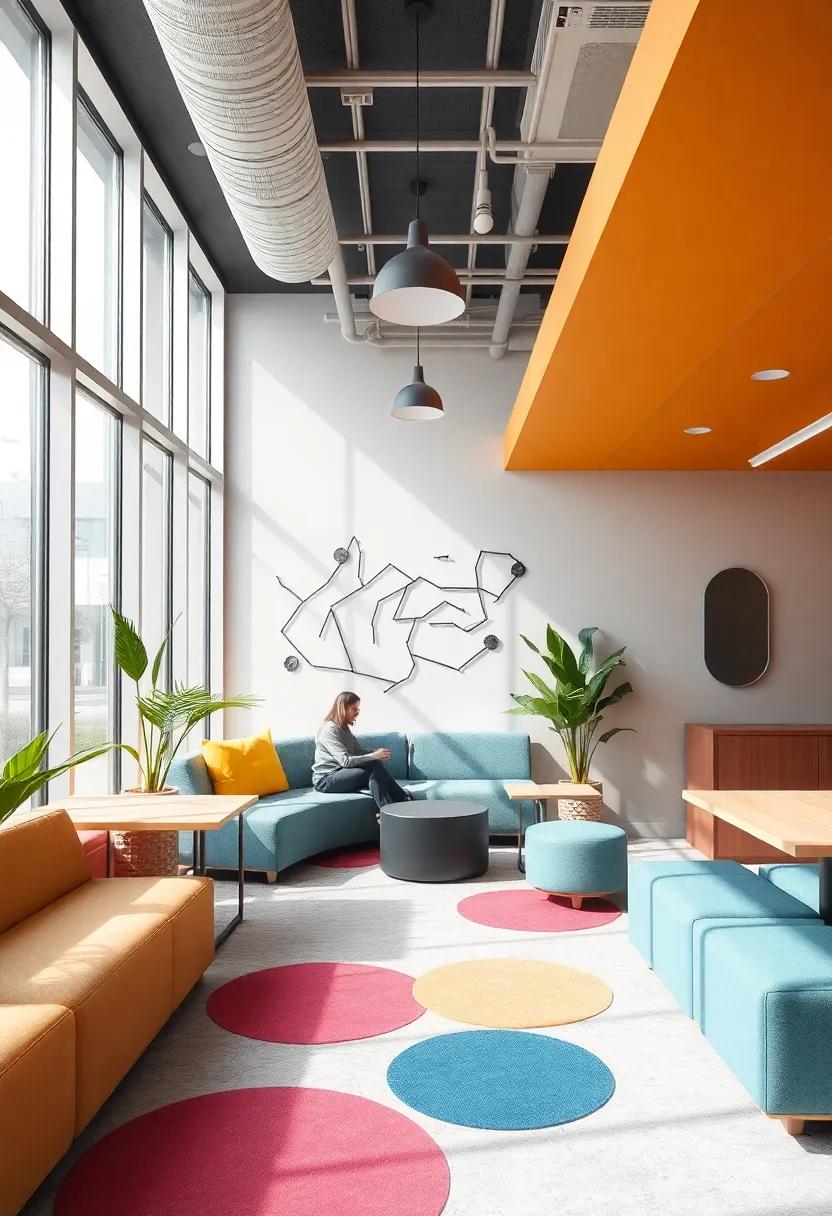
When designing a teen hangout room, consider dividing the space into themed zones that cater to various interests and activities. Establishing areas dedicated to gaming, relaxation, creativity, and study can enhance functionality and encourage social interaction among friends. As an example,a gaming corner could feature comfortable seating,a large TV or projector,and shelves filled with popular video games. Contrast this with a creative nook, equipped with art supplies, a design table, and inspirational decor, allowing for artistic expression. These distinct areas not only promote engagement but also help in managing noise levels, making it easier for different activities to coexist harmoniously.
To further enhance the experience, incorporate thoughtful decor and furniture that aligns with each zone’s theme. Use battery-operated fairy lights for the relaxation area to create a cozy vibe, while wall decals of favorite games or movies can energize the gaming space. Here’s a simple table showcasing potential themed zones and their key features:
| Zone | key Features |
|---|---|
| Gaming corner |
|
| Creative Nook |
|
| study Area |
|
| Chill Zone |
|
Interactive Games Section: Designing Spaces for Fun and Connection
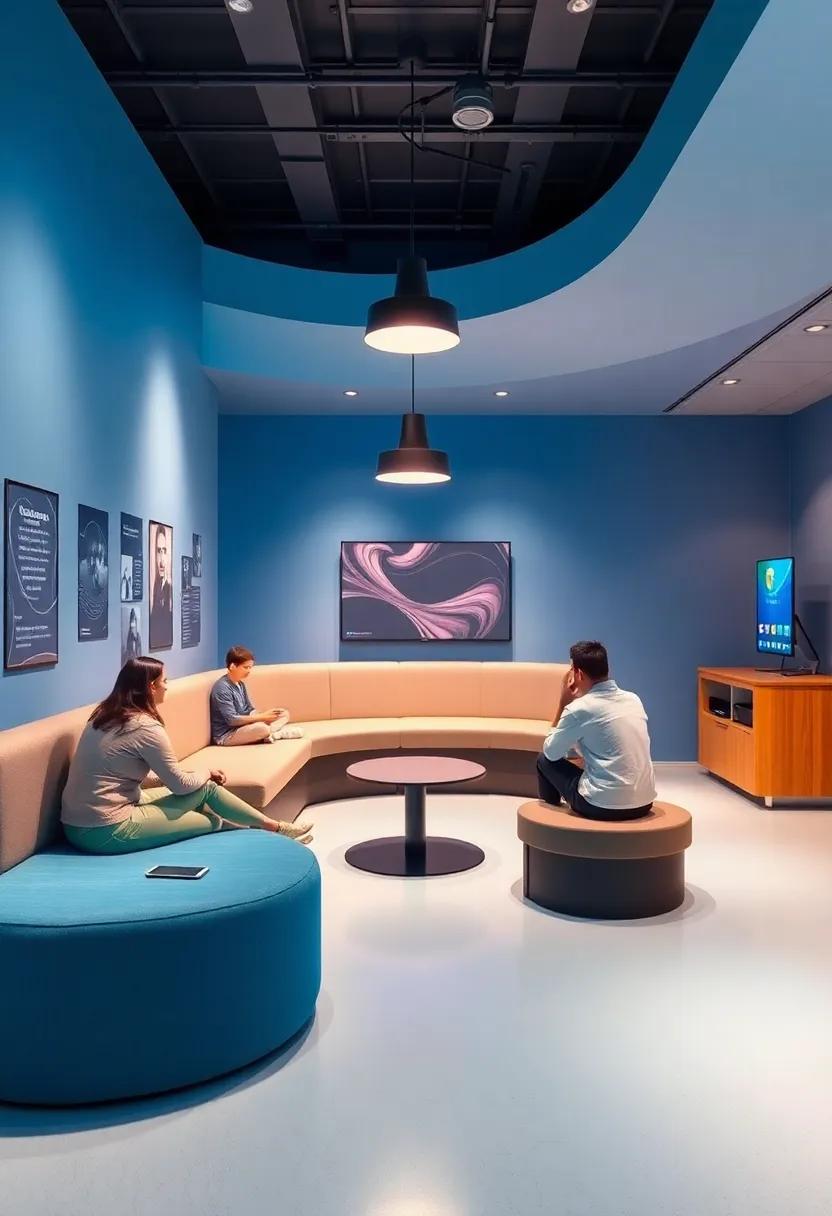
Creating an inviting atmosphere centered around interactive games fosters both fun and meaningful connections among teens. Designate a dedicated area filled with comfortable seating to encourage social interactions, whether it’s bean bags, floor cushions, or gaming chairs. Set up multiple gaming stations featuring consoles, board games, or virtual reality setups to provide a variety of entertainment options. Don’t forget to include accent lighting, such as LED strips, to enhance the ambiance and create a vibrant, dynamic space that beckons teens to hang out and connect with each other.
Incorporating elements like a snack corner or a recharge station can elevate the experience. Consider features such as:
- Mini fridge: Stock it with drinks and light snacks for easy access.
- Pinboard: Allow teens to pin their favorite game posters or upcoming event announcements.
- Interactive wall: Paint a section with whiteboard paint for doodles or game scores.
To visualize the setup, here’s a simple layout idea:
| Area | Purpose |
|---|---|
| Game Consoles | Casual sessions with friends |
| Board Game Table | Strategic gameplay and bonding time |
| Snack Corner | Fueling fun with treats |
Creative Craft Corners: Fostering art and DIY Projects for All

Transforming a teen hangout room into a vibrant space for expression involves incorporating elements that inspire creativity and promote camaraderie.Consider dedicating an area for artistic projects where supplies are easily accessible.Install a pegboard to hold various materials such as paint, brushes, and markers. Adding a cozy,oversized rug can create a comfortable nook for spontaneous brainstorming sessions or collaborative DIY projects. Enhance the ambiance with warm lighting, such as string lights or colorful LED strips, to set the mood for creativity and relaxation.
Furnishing the space with multifunctional pieces is key to maintaining an inviting atmosphere. Try an adjustable table that can serve as both a work station for crafts and a gaming spot. Sturdy bean bags or floor cushions provide flexible seating options for friends to gather around, while wall-mounted shelves can showcase completed creations or serve as a mini-gallery. To further spark creativity, you might consider incorporating a small table for board games and puzzles, ensuring that the hangout room becomes a hub for both art and connection.
Communal Tables: Encouraging Collaboration and Socialization
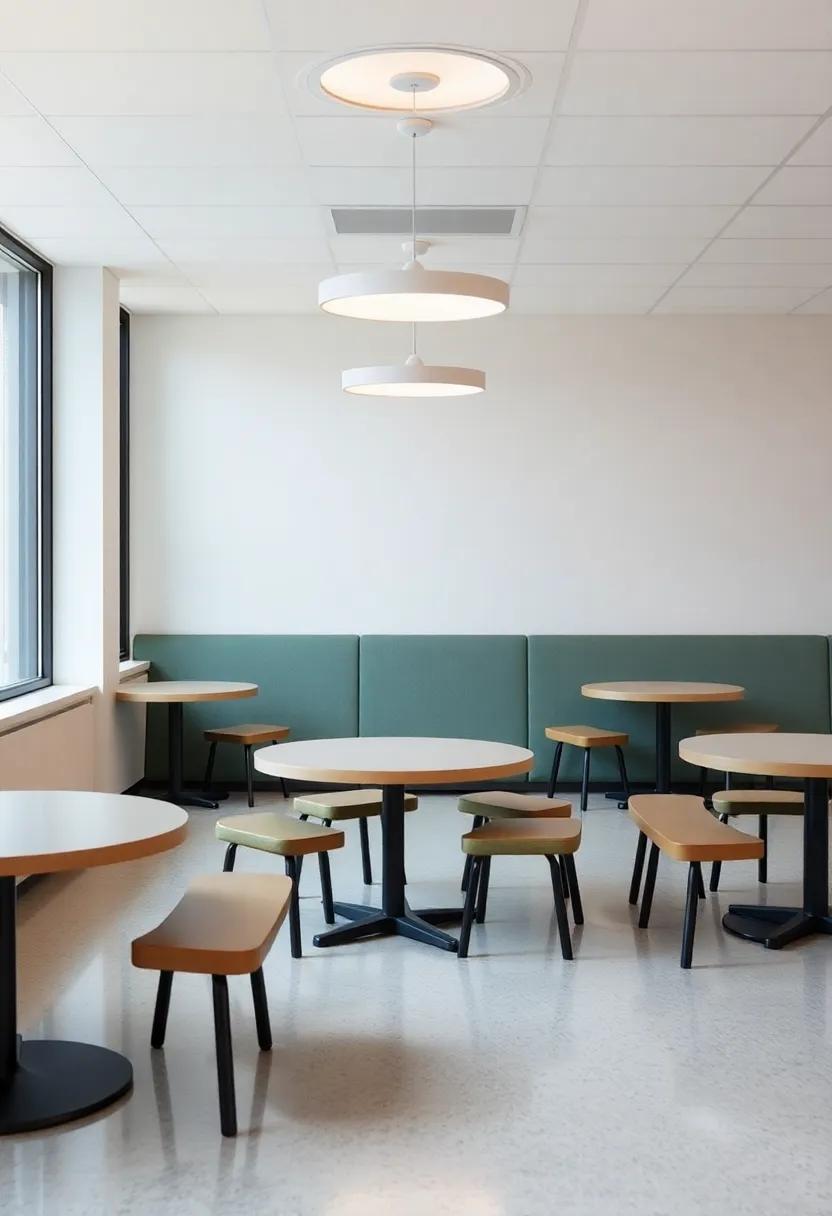
Communal tables serve as the epicenter for interaction in a teen hangout room, breaking down the barriers that often accompany modern socialization. Imagine a spacious rectangular table adorned with vibrant colors and comfortable seating that encourages collaboration and creativity. This setting can host activities ranging from games to arts and crafts, allowing teens to express themselves freely.Consider incorporating elements like:
- Chalkboard paint sections for doodling or note-taking
- Interactive centerpieces like puzzle pieces or origami kits
- Charging stations for devices, ensuring connectivity
Along with being a spot for games and projects, communal tables can also foster meaningful conversations. Integrate comfortable seating arrangements with cushions and soft textiles to create an inviting atmosphere. Enhance the experience by adding a menu board where teens can suggest snack options or activities, encouraging participation and ownership over the space. here’s an example of a simple yet engaging menu board layout:
| Activity | Snack Option |
|---|---|
| Game Night | popcorn |
| art & Crafts | Veggie Platter |
| Movie Marathon | Pizza |
Soundscapes: Curating Audio Ambiance for a Relaxing Environment
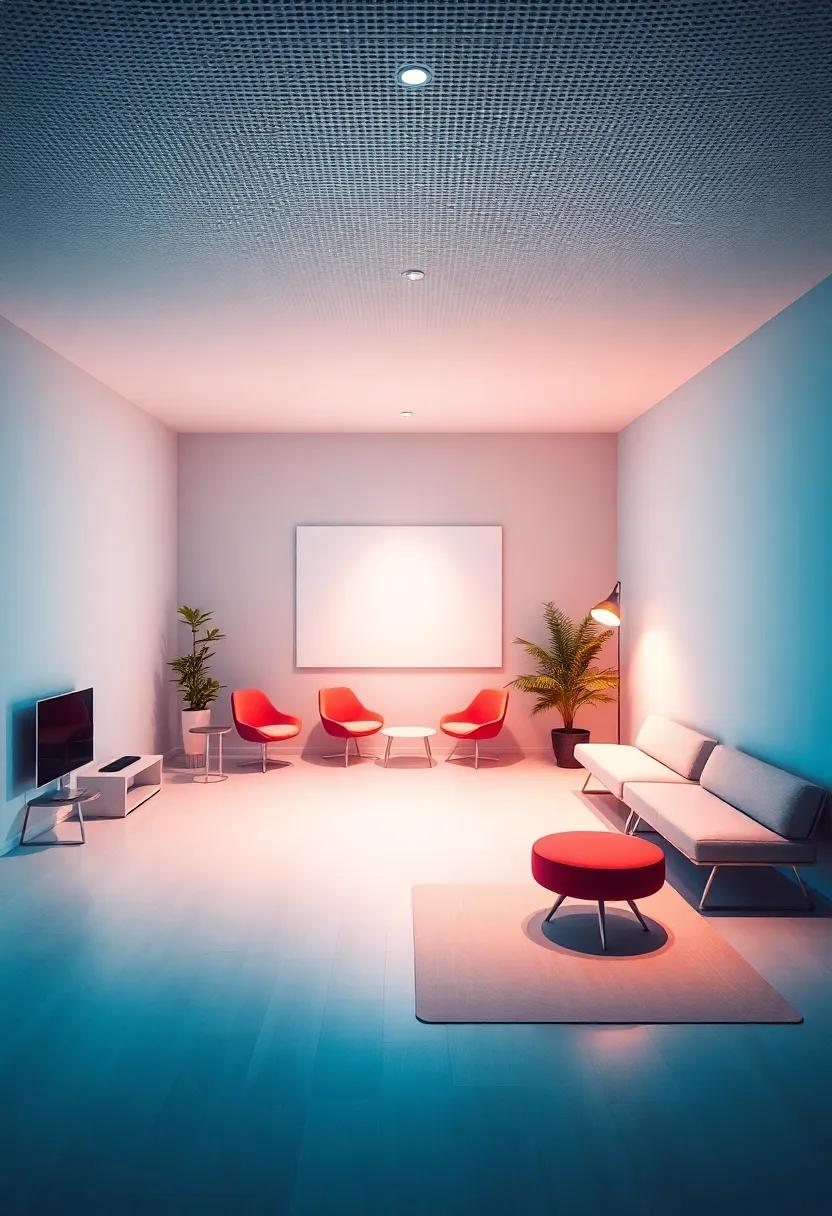
To foster a serene atmosphere,consider incorporating a variety of audio elements that cater to different moods and activities. Start with a base layer of ambient sounds, such as gentle nature sounds or soft instrumental music, to provide a comforting backdrop.Layer this with interactive audio elements that encourage connection, like a playlist of favorite songs that friends can contribute to, or sound machines that emit calming white noise or ocean waves. Don’t shy away from introducing a DIY recording station where teens can create their own soundscapes, allowing them to express their creativity and share their favorite audio moments with each other.
For a more structured auditory experience, consider curating specific themed playlists for different activities. For instance, set up a calming zen playlist for study sessions, an upbeat mix for dance-offs, or even a nostalgic throwback compilation for movie nights. Use accessible audio platforms to create and display these playlists, encouraging teens to explore various genres together. To enhance the aesthetic, introduce visual audio cues, like LED lights that change to rhythm, transforming the room into an immersive sound experience that captivates their creativity and keeps conversations flowing.
Outdoor-Inspired Elements: Bringing Nature Indoors for a Fresh Feel
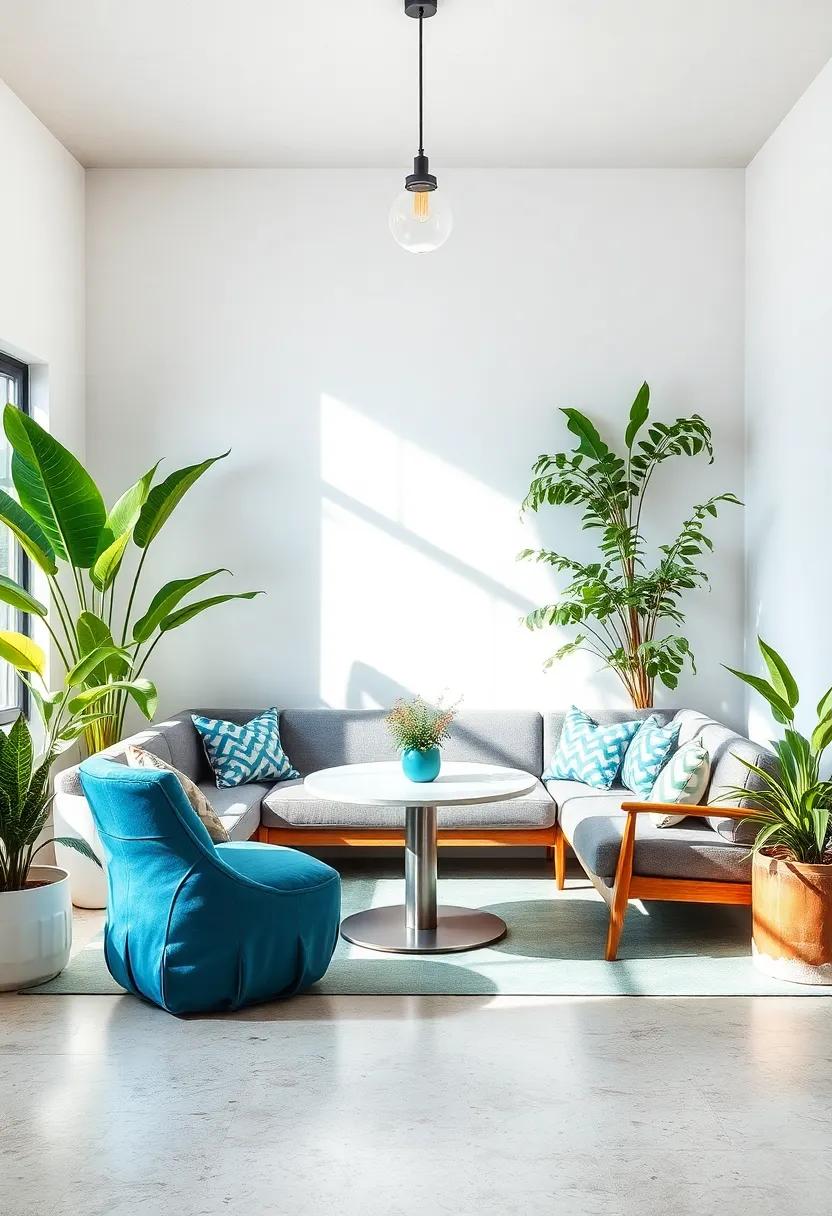
Incorporating elements inspired by the great outdoors can transform an ordinary room into a serene and energizing space.Consider adding natural materials such as wood, stone, or bamboo to convey a sense of groundedness. Indoor plants not only bring a splash of greenery to the room but also improve air quality and create a calming atmosphere. Some ideal plant options include:
- Succulents: Low-maintenance and aesthetically pleasing.
- ferns: Lush and perfect for adding texture.
- Spider Plants: Great for hanging arrangements.
To enhance this theme further, think about utilizing artwork featuring landscapes, wildlife, or botanical prints. Additionally,soft textiles in earthy tones can create a cozy,inviting feel. Use a combination of textures—like rugs or cushions made from natural fibers—to add warmth and comfort. Here’s a quick reference on how different colors can influence the ambiance:
| color | Effect |
|---|---|
| Green | Promotes relaxation and balance. |
| Brown | Evokes warmth and stability. |
| Blue | Enhances creativity and calmness. |
Chalkboard Walls: sparking Ideas and Creativity with a Writable Surface

Transforming a plain wall into a chalkboard surface can instantly turn a room into a creative haven for teens. This writable surface encourages spontaneous doodles, thoughtful quotes, collaborative brainstorming, and artistic expressions.Imagine a space where your teenagers can unleash their imaginations; they can sketch ideas for a group project, jot down their favorite song lyrics, or even leave funny messages for each other. A few vibrant chalk colors can add a pop of personality, making the room feel lively and inviting.
To enhance the functionality of chalkboard walls, consider implementing creative zones. Here are a few ideas to get started:
- Art Corner: Designate a section for drawing and doodling with chalks and other art supplies.
- Planner Zone: Use part of the board for month-to-month planning, where teens can write events, deadlines, and special dates.
- Message Board: Create a space for friends to leave notes or reminders for each other, fostering a sense of connection.
| Activity | Description |
|---|---|
| Mind Mapping | Visualize ideas and concepts collectively. |
| Joke Exchange | A fun place to leave silly jokes and make each other laugh. |
| art Challenges | Set a timer and have quick drawing contests. |
Cozy Reading Nooks: Establishing a Tranquil Escape for Book Lovers
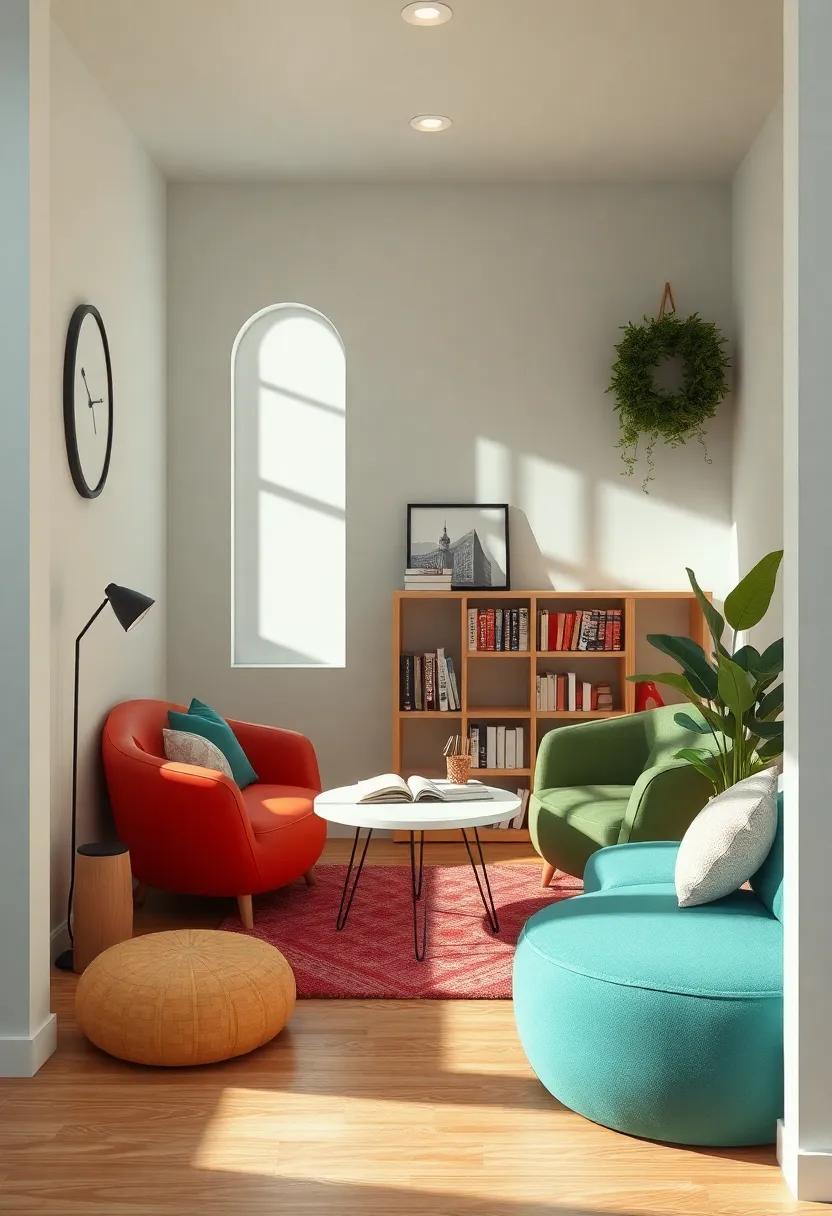
Imagine curling up with a book in a spot designed for relaxation and creativity.To create an inviting reading nook, choose a comfortable chair or bean bag that cushions your body and encourages hours of enjoyment. surround it with soft lighting, such as fairy lights or a stylish lamp, to provide a warm glow that sets the perfect mood for diving into different worlds through literature. Consider incorporating a small side table for your favorite beverage or a few essentials, creating an oasis where you can momentarily escape reality. A plush throw blanket and decorative pillows can enhance the cozy ambiance, inviting you to settle in for a long reading session.
To personalize your haven, think about adding shelf space for your favorite titles and literary treasures. Wall-mounted shelves or a compact bookcase not only keep your collection organized but also add character to the space. Decorative elements such as whimsical artwork, plants, or photo frames can make your nook feel uniquely yours. Don’t forget to include a floor rug to anchor the area and provide comfort underfoot, especially during those chilly evenings. A few careful additions can transform a simple corner into a tranquil escape, nurturing both your connection with books and your creative spirit.
Personalized Display Areas: Showcasing Hobbies and Interests in Style
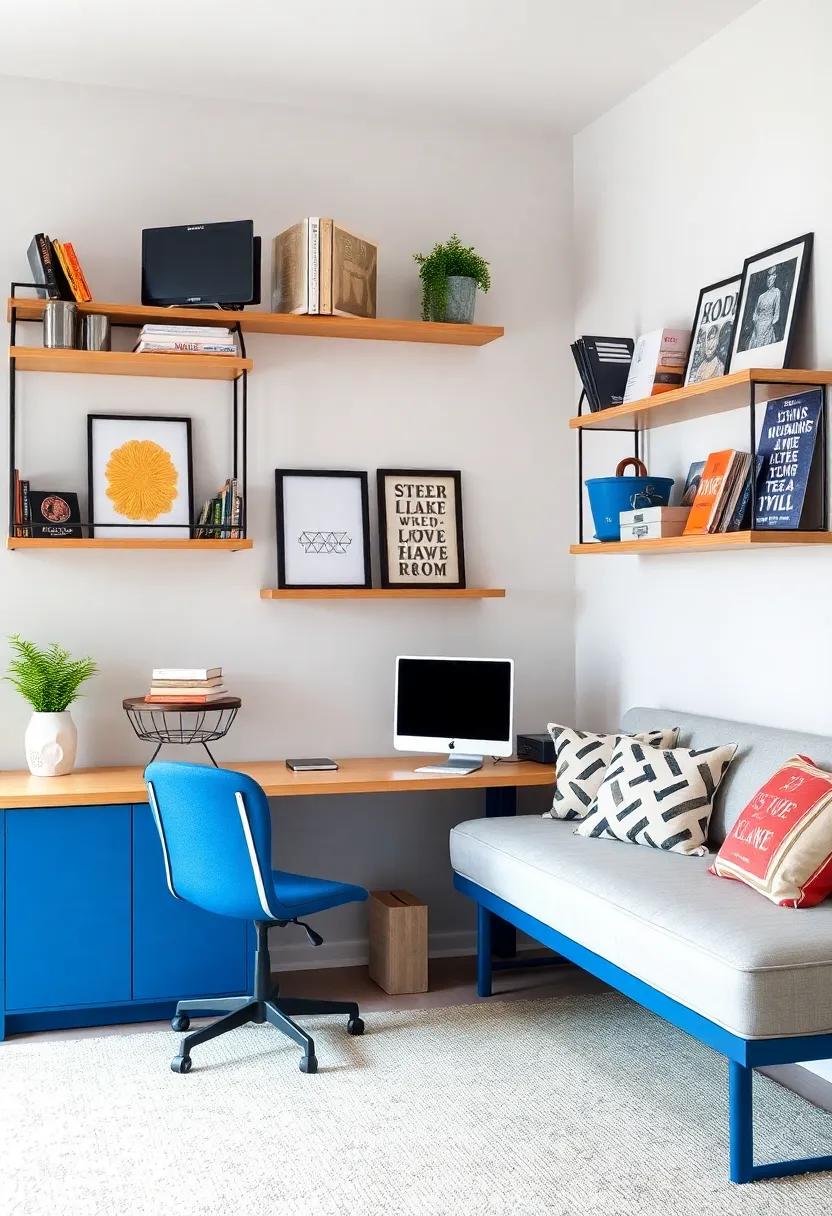
Transforming the hangout room into a personal sanctuary for teens can be as simple as integrating personalized display areas that reflect their unique hobbies and interests. think of using shelves and corkboards to create an ever-evolving gallery of memorabilia. Display their favorite books, movie posters, or even artwork that resonates with their style. A wall-mounted display case could be perfect for showcasing collectible action figures or trophies, while a dedicated chalkboard wall can serve as a canvas for doodles, reminders, and inspiring quotes.
Adding decorative elements such as themed zones can further elevate the room’s aesthetic while fostering a creative vibe. Consider these engaging ideas:
- Music Corner: create a space for instruments, vinyl records, and headphones.
- Art Station: Equip it with easels, paints, and sketch pads for budding artists.
- Gaming Nook: Integrate gaming consoles, comfy seats, and themed décor.
By cultivating areas that celebrate individuality, the hangout room becomes more than just a place to chill; it evolves into an inspiring environment for connection and creativity.
Collaborative Spaces: Designing Areas for Team Projects and Group Fun
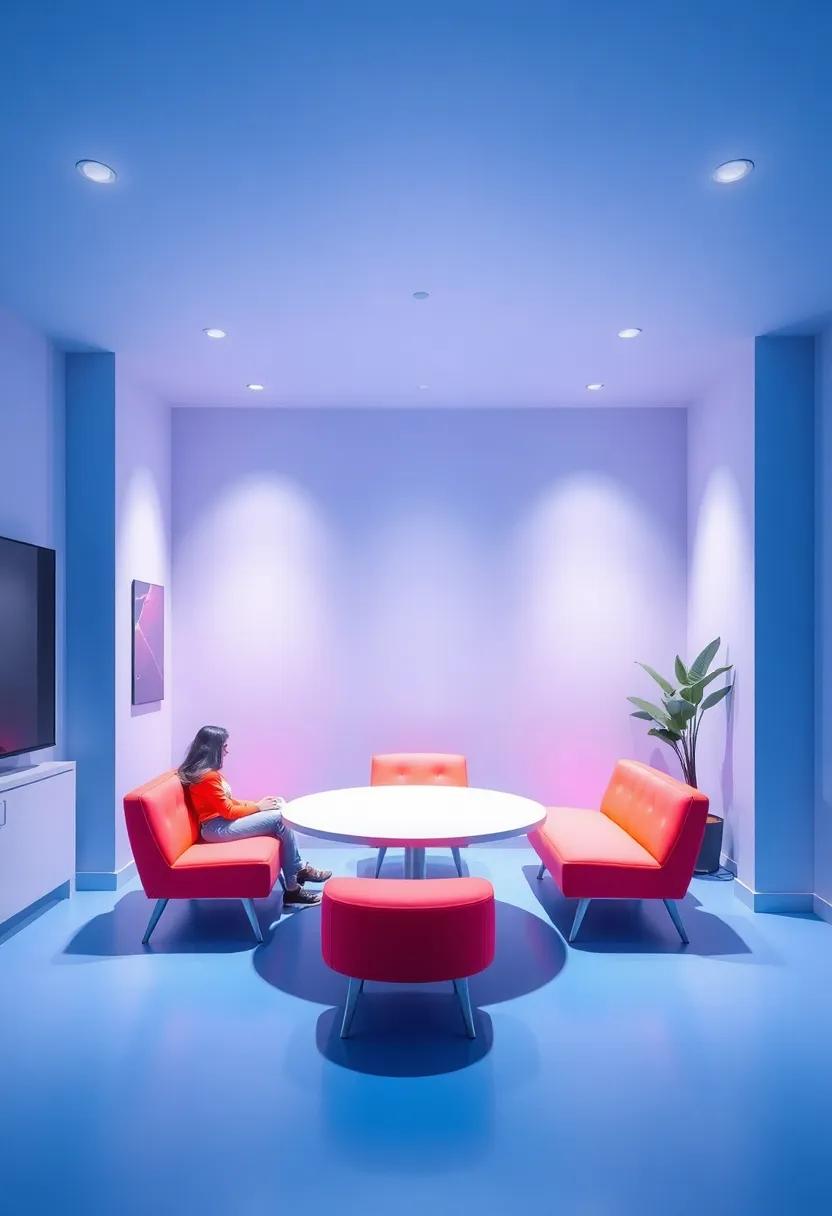
Creating an inviting and functional environment for collaboration is key to fostering creativity and teamwork. To achieve this, consider incorporating features that encourage both structured projects and spontaneous fun. Utilize modular furniture that can be rearranged to fit different group sizes and activities.For example, a combination of bean bags, stackable chairs, and low tables creates a flexible space for brainstorming sessions or casual hangouts. Additionally,integrate a whiteboard wall or a chalkboard paint area where ideas can flow freely,allowing for dynamic group discussions and visual inspiration. Provide technology stations with easy access to power outlets, enabling teens to work on projects together, using laptops or tablets for research and collaboration.
To infuse an element of enjoyment alongside productivity, consider adding playful elements to the design. Features such as a game corner with board games, a ping-pong table, or even a cozy reading nook can serve as a delightful escape during project breaks. Incorporating creative zones for arts and crafts encourages hands-on activities, allowing teens to express themselves while bonding over shared interests.A vibrant color palette can enhance the overall mood of the hangout space, with contrasting hues to energize and inspire. Incorporate sensory elements like a music station or aromatic plants to stimulate the senses, ensuring the environment remains engaging and inviting.
Snug Movie Zones: Creating the Ultimate Home Theater Experience
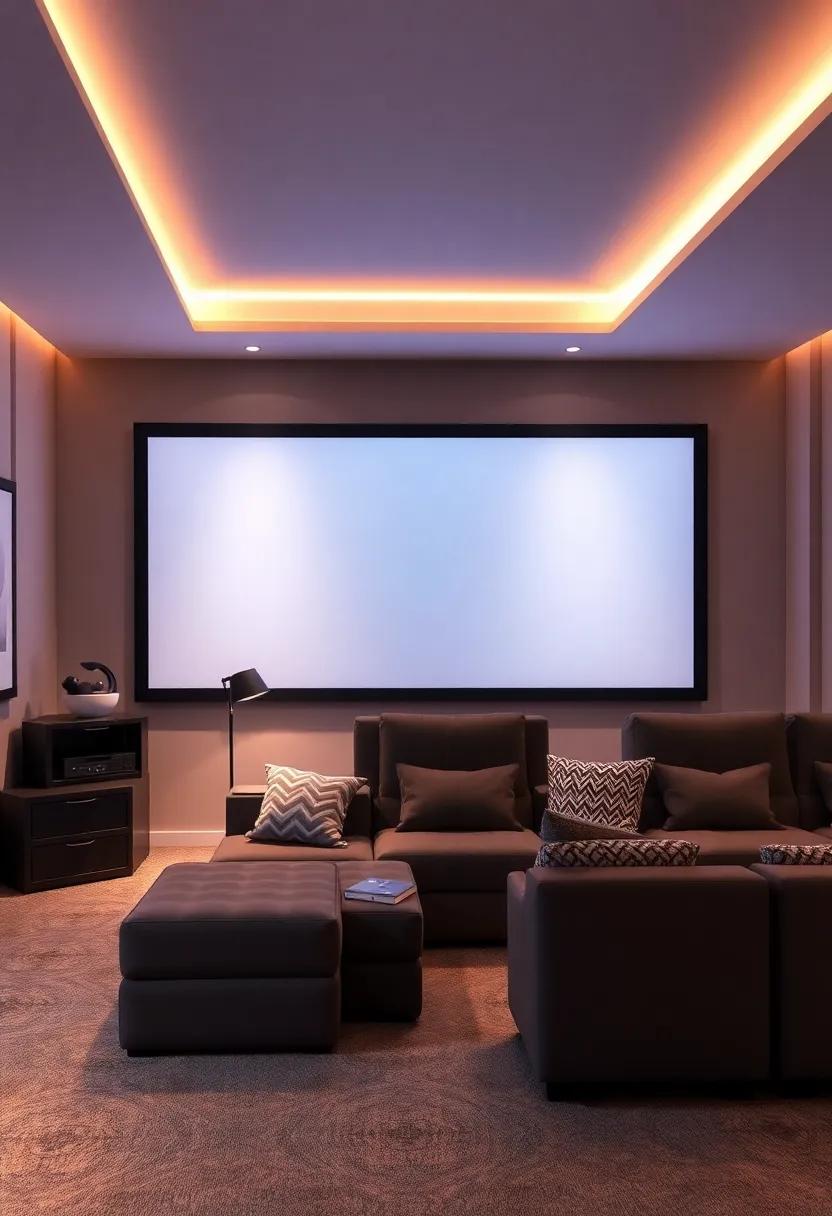
Transforming space into a cozy movie zone involves a blend of comfort and technology. Start by selecting the right seating—plush sofas or oversized bean bags can make movie-watching feel like a luxurious experience. Incorporate aesthetic lighting options such as dimmable LED lights or soft fairy lights to create an inviting atmosphere.It’s crucial to ensure that your screen size and placement are optimal for the viewing angle, making sure everyone gets a great view of the action. Here are some essential elements to consider for your setup:
- High-quality projector or large-screen TV
- Sound system that envelops the room
- Soundproofing elements like heavy curtains or acoustic panels
- Snack station with popcorn, snacks, and drinks
To take movie nights to the next level, create a whimsical movie library. Utilize shelves or a dedicated closet to organize a collection of your favorite films, complete with fun categorization. Consider using a simple table to track your collection or movie night preferences,helping to build a social aspect to your evenings:
| Movie Genre | Favorite Movie | Must-Watch Combo |
|---|---|---|
| Action | Mad Max: Fury Road | With Pizza |
| Comedy | The Grand Budapest Hotel | with Ice Cream |
| Drama | Moonlight | With Tacos |
Mindful Relaxation Areas: Designing Spaces for Meditation and Reflection
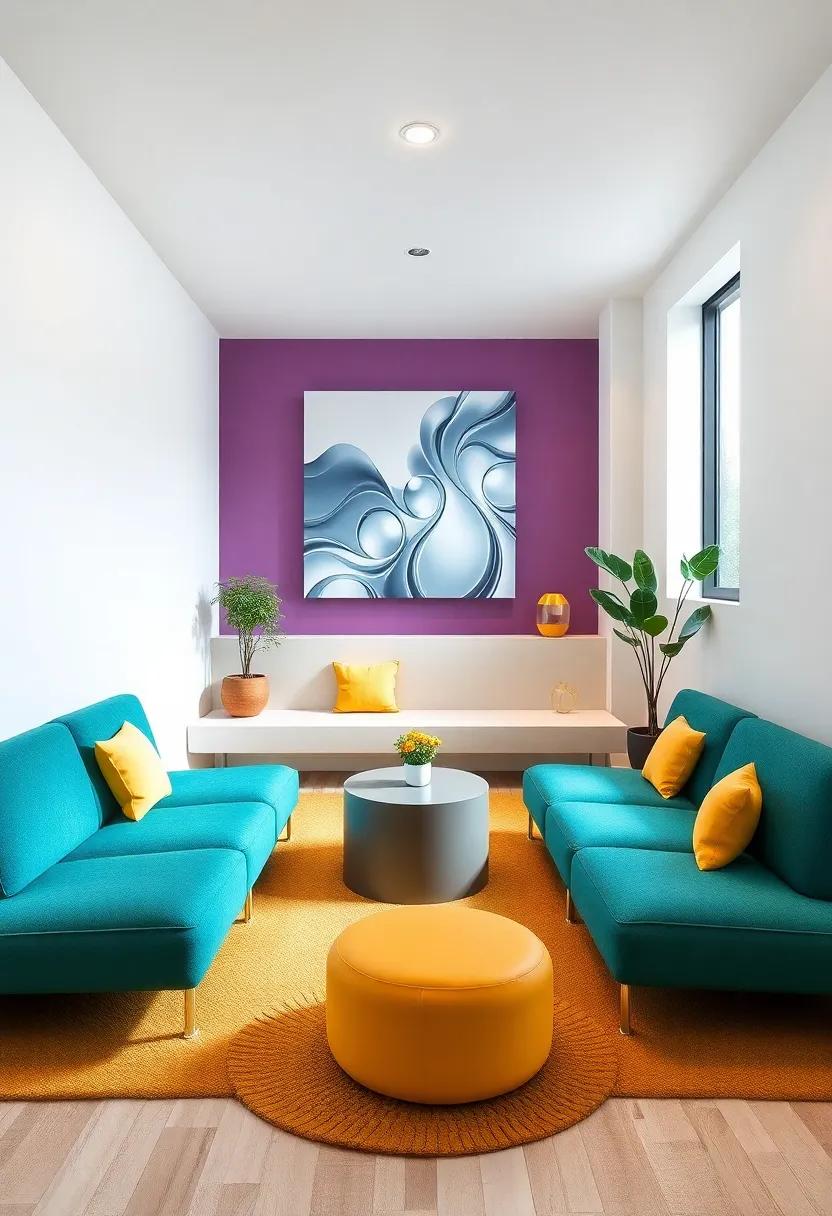
Incorporating mindful relaxation areas within a teen hangout room can foster a sense of calm and introspection, essential for mental well-being. Imagine a cozy nook adorned with plush cushions and textured throws, where the atmosphere is softened by warm lighting and calming colors such as muted greens and blues. Setting up this space with elements that inspire peace, like an indoor fountain or soft instrumental music, can turn it into a personal refuge for meditation or quiet reflection. Consider placing essential oils or calming aromatherapy diffusers to enhance the sensory experience and make relaxation a delightful habit.
To maximize the utility of these spaces, think about including versatile furniture that effortlessly adapts to different moods.A foldable yoga mat or a wall-mounted bookshelf can double as a display area for inspiring biographies and art pieces. Moreover, a small circular table can serve both as a collaborative space for creative gatherings and a serene spot for individuals seeking solitude. below is a simple table to visualize the elements you might consider integrating into your mindful relaxation area:
| Element | Purpose |
|---|---|
| Cozy Cushions | Comfort and relaxation |
| Indoor Fountain | Soothing sound and ambiance |
| Aromatherapy Diffuser | Enhancing mood through scent |
| Wall Art | Visual inspiration |
Youthful Inspirations: Infusing the Room with Energetic Decor Choices
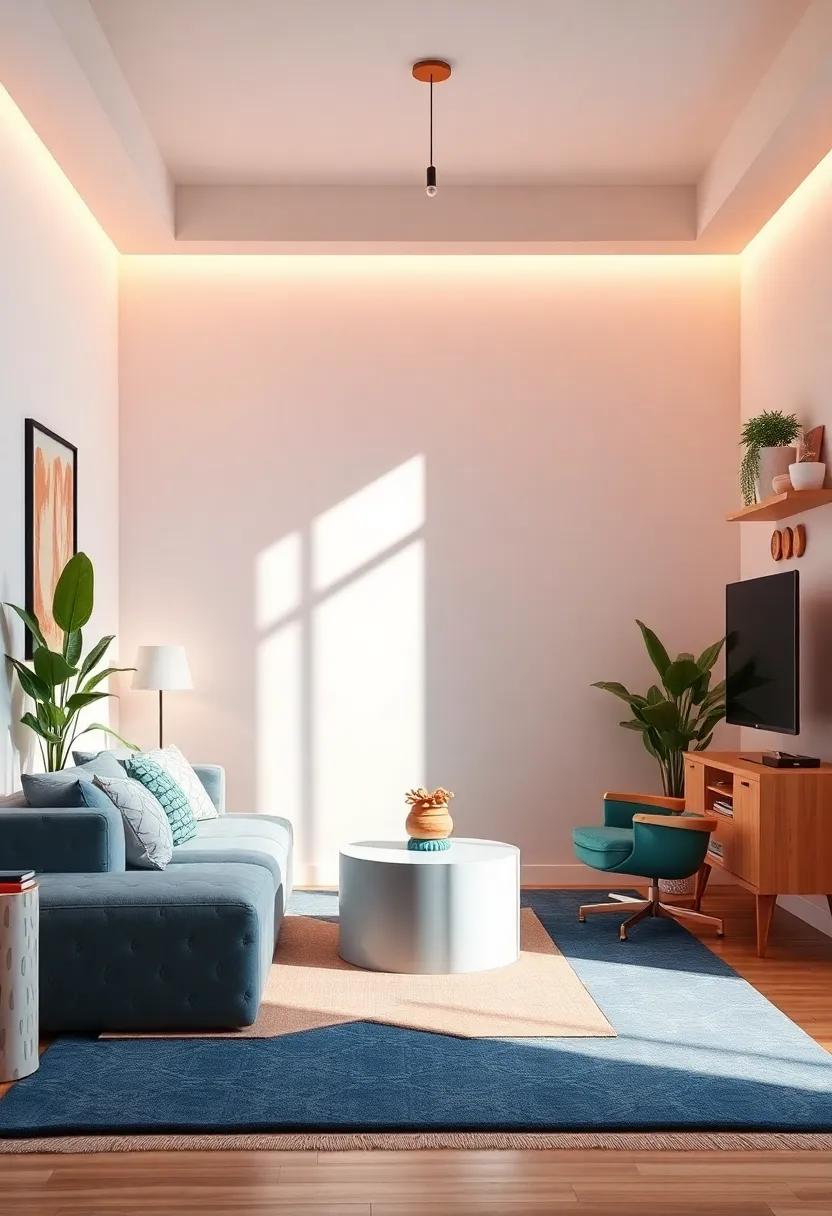
Transform your teenager’s hangout space into a vibrant retreat with energetic decor choices that reflect their interests and passions. Utilizing a bold color palette can infuse the room with a sense of excitement and creativity. Think of bright accent walls, striking murals, or colorful decals that showcase their favorite bands, films, or hobbies. Pair these colors with eclectic furniture—such as bean bags, oversized floor cushions, or modular seating—that encourages relaxation and social interaction.
additionally, integrating dynamic lighting can elevate the atmosphere to suit any mood. Consider string lights, LED strips, or funky floor lamps that can change colors or intensity, providing a perfect backdrop for both study sessions and movie marathons. Keep creativity at the forefront by encouraging personal touches, such as a gallery wall for art, photos, and inspirational quotes. Letting them curate their space not only fuels their creative spirits but also fosters a sense of belonging and pride in their environment.
Resilient Flooring: Selecting Stylish and Practical Surfaces for Active Use
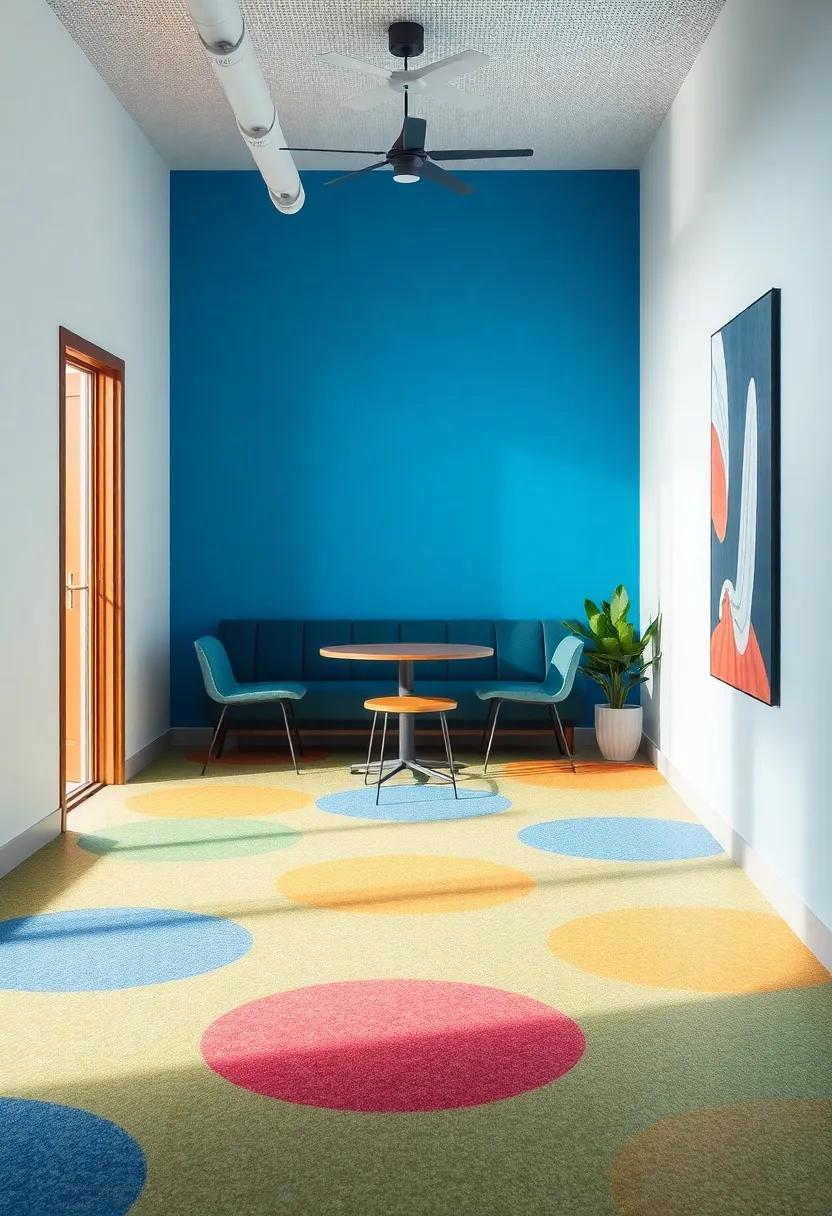
When creating a space that captures the energy of adolescence, selecting the right flooring is key to combining functionality with aesthetic appeal. For a teen hangout room that sees plenty of action, consider flooring options that are both durable and stylish. Luxury vinyl planks and laminate flooring provide a chic appearance without sacrificing resilience, making them ideal for areas prone to spills and wear. Their water-resistant features and easy cleaning capabilities allow for quick upkeep, which is particularly beneficial for busy teens. Additionally, these surfaces come in a myriad of designs, from sleek modern finishes to rustic wood looks, providing endless possibilities for personalization.
Incorporating color and texture into the flooring selection can also enhance the overall vibe of the room. Opt for options that reflect your teen’s personality while ensuring safety and comfort. Textured carpets can add warmth and cushion, perfect for lounging, whereas sleek, polished surfaces can provide a modern edge.Consider creating zones in the room by using area rugs over the main flooring—this not only defines spaces for different activities but also contributes to the room’s visual appeal. Here’s a quick comparison to help you choose:
| Flooring Type | Durability | Style Options | Maintenance |
|---|---|---|---|
| Luxury Vinyl Plank | High | Modern, Rustic | Easy, Wipe clean |
| Laminate Flooring | Medium | varied, Trendy | Simple, Vacuum |
| Textured Carpet | Medium | Cozy, elegant | Moderate, Regular Vacuum |
Pop Culture Elements: Adding favorite movies, Shows, and Games to the Decor
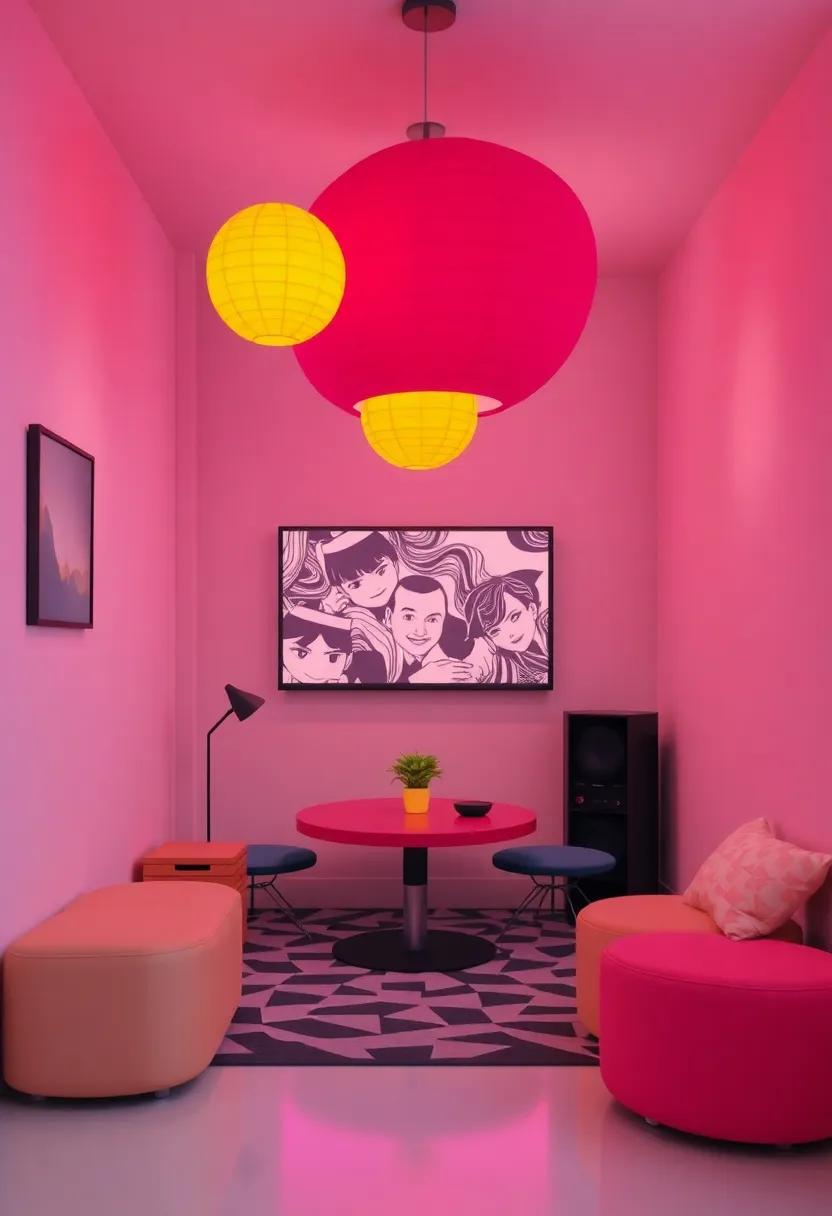
Incorporating beloved pop culture elements into your hangout room can transform the space into a vibrant sanctuary that resonates with teen interests. Start by showcasing favorite movies and TV shows through wall art or themed decor. Consider using framed posters, canvas prints, or even wallpaper depicting key scenes or characters. A cozy viewing area can be established with plush throws and cushions that feature iconic quotes or imagery from these beloved films and series. To emphasize personalization, create a dedicated display area for collectibles like action figures or memorabilia that invites conversation and nostalgia.
Interactive games can also play a crucial role in transforming the vibe of the hangout space. establish a cozy gaming corner, adorned with LED strip lights that can change colors to match the ambiance of the games being played. Consider incorporating a gaming-themed coffee table that serves dual purposes: it can hold snacks and drinks while providing an engaging design inspired by popular franchises. Here’s a quick reference table for inspiration on integrating games:
| Game/Franchise | Decor Idea |
|---|---|
| Super Mario | Pixelated wall art and question mark block accessories |
| The Legend of Zelda | Shield and sword decorations, along with Triforce motifs |
| fortnite | Bright and colorful posters, with themed bean bags |
To Wrap It Up
As we draw the curtains on this exploration of crafting the perfect teen hangout room, it’s clear that these spaces are much more than mere recreational spots; they are vibrant canvases for connection, creativity, and cherished memories. By blending comfort with personal flair, thoughtful design with practical functionality, you can create an environment that not only caters to your teen’s hobbies and interests but also fosters crucial social bonds. Whether it’s a cozy nook for late-night gaming, a lively art corner for creative expression, or a chill-out zone for heartfelt conversations, each element plays a pivotal role in shaping experiences that can last a lifetime.As you embark on this exciting project, remember to involve the teens in your life—after all, who better to help mold their sanctuary than the ones who will inhabit it? Through collaboration and imagination, you can transform a simple room into a dynamic hub that reflects their unique personality and encourages exploration and friendship. So grab those paintbrushes, gather your cushions, and let the journey of creation begin. After all, the perfect hangout room is not just a space; it’s a gateway to connection and creativity that resonates with the spirit of youth. Happy decorating!
